
Eressa is a genus of moths in the family Erebidae. The genus was erected by Francis Walker in 1854.

Lyclene is a genus of lichen moths of the family Erebidae, subfamily Arctiinae. The genus was erected by Frederic Moore in 1860.
Migoplastis is a genus of moths in the subfamily Arctiinae first described by Rudolf Felder in 1868. They are confined to India's Nilgiri Mountains and to Sri Lanka.
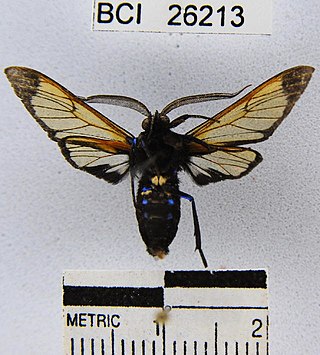
Sarosa is a genus of moths in the subfamily Arctiinae. The genus was erected by Francis Walker in 1854.

Virbia is a genus of tiger moths in the family Erebidae. The genus was erected by Francis Walker in 1854.

Calesia is a genus of moths of the family Erebidae. The genus was erected by Achille Guenée in 1852.
Olulis is a genus in the moth family Erebidae. There are about eight described species in Olulis, found in South, Southeast, and East Asia, and in Australia.

Rhosus is a genus of moths of the family Noctuidae. The genus was erected by Francis Walker in 1854.
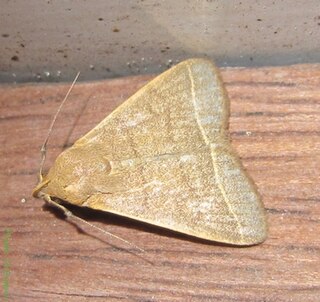
Simplicia is a genus of litter moths of the family Erebidae. The genus was erected by Achille Guenée in 1854.

Spirama is a genus of moths in the family Erebidae first described by Achille Guenée in 1852.

Asota is a genus of moths in the family Erebidae first described by Jacob Hübner in 1819. Species are widely distributed throughout Africa, India, Sri Lanka, Myanmar, the Malayan region and tropical parts of the Australian region.
Bylazora is a genus of moths in the family Geometridae described by Francis Walker in 1863.

Lepidopterology is a branch of entomology concerning the scientific study of moths and the two superfamilies of butterflies. Someone who studies in this field is a lepidopterist or, archaically, an aurelian.
Oricia is a genus of moths of the family Notodontidae. It was described in 1854 by English entomologist Francis Walker and contains four species distributed in Central and South America.
Jocara is a genus of snout moths. It was described by Francis Walker in 1863.
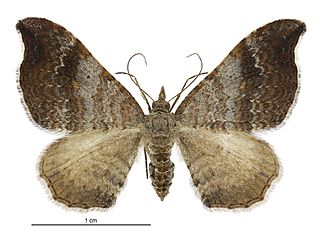
Homodotis megaspilata, also known as the small hooked-tip looper moth, is a moth of the family Geometridae. It is endemic to New Zealand and can be found throughout the country. It is regarded as being common species. The preferred habitat of this species is native forest, scrub, coastal areas and domestic gardens. Larvae feed on the dead leaves of Geniostoma ligustrifolium and likely other native plants. Once mature the larvae will pupate on the ground forming a silken cocoon protected by hiding inside two leaves of its host plant. Adults are nocturnal and are on the wing from October to April. They are attracted to light. In appearance the adults of this species are extremely variable but can be distinguished from similar species as all variations have forewings with blunt hook shaped tips.

Dipaenae ferruginosa is a moth of the subfamily Arctiinae first described by Francis Walker in 1854. It is found in the Amazon region.

Dipaenae contenta is a moth of the subfamily Arctiinae first described by Francis Walker in 1854. It is found in the Amazon region.
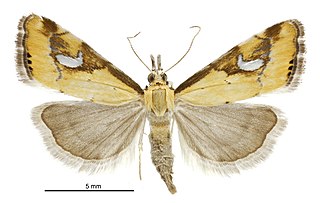
Glaucocharis lepidella is a species of moth in the family Crambidae. It was described by Francis Walker in 1866. It is endemic to New Zealand and is found in both the North and South Island. The species inhabits lowland to subalpine native forest. Larvae may feed on mosses. Adults are on the wing from November to February and are attracted to light.
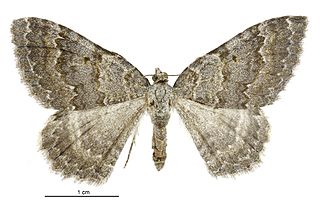
Gingidiobora subobscurata is a species of moth in the family Crambidae. It is endemic to New Zealand. This species has been classified as "At Risk, Declining" by the Department of Conservation.













